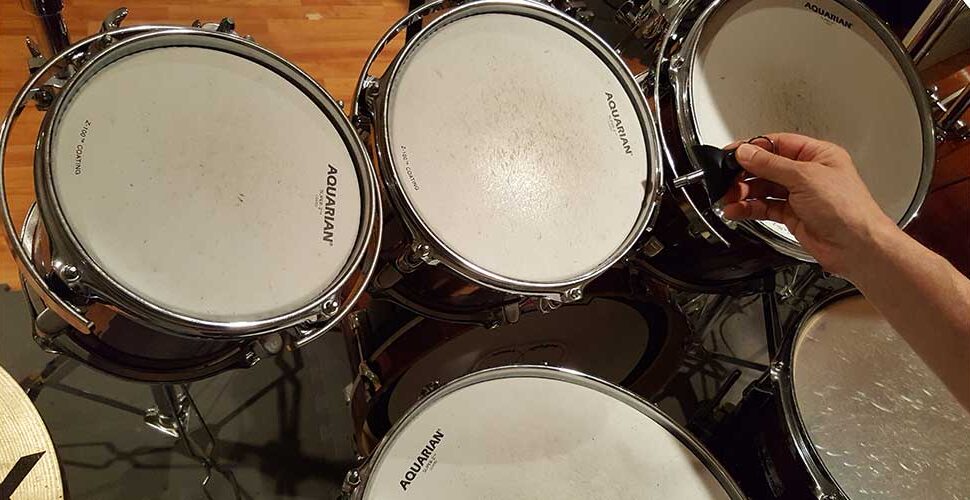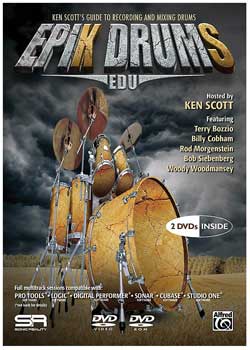Difficulty Level: Easy / Time Required: 20 Minutes
You Will Need:
- Drumset
- Drumstick
- Drum tuning key
- Quiet location
Here’s how:
- Start with the snare drum and a drum key. Turn the snares off and loosen all the lugs on both the bottom and top heads until the skins (or plastics would be more accurate) are totally loose.
- Tune the bottom head first. Pick a lug and tighten it with your drum key just until you can feel some resistance. Just until the head begins to tighten.
- Moving in a clockwise direction, tighten the next lug until you feel the same resistance as the first.
- Continue moving around the drum in a clockwise circle, one lug at a time, until you reach the lug where you started.
- Repeat the cycle from step #2 through #4 over again, this time turning the key one full turn on each of the lugs.
- Once you’ve made your way around the entire drum for the second time, pick up a drumstick and go back to the lug where you started.
- Strike the head with the stick so the stick hits about two inches away from the lug in a straight line toward the center of the drum.
- Keep tightening the head with the key until you reach the pitch you like. Remembering that pitch, continue in a clockwise direction until you reach the next lug.
- Tighten the lug as you strike the head, matching the pitch to that of the head near the previous lug.
- Continue to move clockwise from lug to lug, tightening and listening to the pitch, until you have tightened all lugs. At this point, you should have the bottom head close to the pitch that you prefer.
- Flip the drum around and repeat the entire procedure, from step #2 through step #10, on the top (batter side) head.
- After you’ve finished tuning both heads, tap the bottom and the top heads with a drumstick. The pitch should be the same or extremely close.
- Once you’ve matched the pitches of the top and bottom heads, tighten the top head a little bit more by circling the drum like before.
- Repeat the procedure from step #1 through #13 for each of your drums, including the bass drum. And that’s all there is to it.
Tiger Tips:
- Although drum sound is an individual preference, this tuning method is simple and effective for any style drumming.
- Some drummers use an opposite-lug tuning method but this was only necessary in the days when real calf skin heads were used on drums.
- I favor the tighter head on top (see #13) because the drum gives a better stick bounce this way. Try tuning with the bottom head tighter and see what you prefer.
- If you have a drum with only one head on it, follow the instructions in step 11 only.
Until next time, have fun and stay loose!
–Tiger Bill







